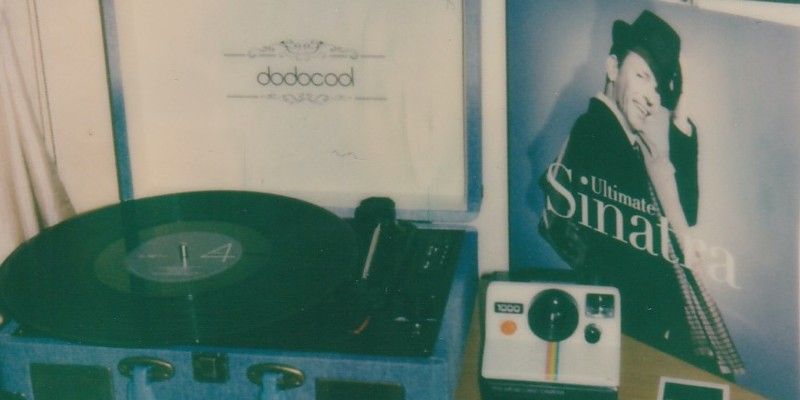Frank Sinatra ranks as one of the best-selling singers of all time. With a career that lasted six decades, the American vocalist cemented his legacy as a true legend of popular music. But what genre is Frank Sinatra’s music?
From his humble beginnings in New Jersey, Sinatra’s rise to global fame is inspiring to say the least. Throughout his career, the landscape of popular music underwent many significant changes.
This inspired the singer to evolve his style throughout his career, but despite these adjustments, the key element – his iconic voice, remained instantly recognizable.
Categorizing Frank Sinatra’s type of music into a single genre is a difficult task. In this article, I’ll explore the various aspects that he used and attempt to identify the genre that he belongs to.
Frank Sinatra’s Signature Style
With most popular musicians, it’s relatively easy to describe their musical genre. No one can argue against James Brown being labeled a funk and soul artist, or claim that BB King wasn’t a bluesman.
However, specifying a single Frank Sinatra genre of music isn’t quite so straightforward. This is because his unique style borrowed elements from different genres.
To understand Frank Sinatra’s type of music, we must consider the time period that he burst onto the scene, and what was considered popular during that era.
Is Frank Sinatra a Pop Musician?
Renowned for his smooth, crooning vocals and perfect articulation, Sinatra has sold over 150 million records to date. It would therefore be accurate to label him a “pop” musician.
Pop is arguably the broadest genre of them all, as it refers to music that is in the mainstream at any given time. Throughout the decades, Frank Sinatra has been heavily played on radio stations worldwide, and he enjoyed remarkable success in the record-sale charts of many countries.
As a result, there’s a strong argument that pop is the genre that best describes Frank Sinatra. The only issue with this label is that it doesn’t describe the actual stylistic aspects of his music, but rather states that it was a hit with the masses.
Pop music changes as time go by. Before the rock and roll era, crooners like Frank Sinatra were considered “pop”. Today, these artists are often referred to as traditional pop.
Depending on the decade, certain musical genres are considered to be pop music. For example, in the early ‘60s, surf-rock was considered to be pop music, as it was a dominant force in the charts.
In the 1980s, synth-based music was considered to be pop, while surf rock had diminished in popularity.
Sinatra is still popular today, so there’s no denying that he is a pop singer. Nevertheless, there are other musical genres that it could be argued he also belonged to.
Is Frank Sinatra Jazz?
Other than traditional pop, another candidate for the Frank Sinatra genre of music is most commonly associated with is jazz. His backing bands often consisted of the most popular jazz musicians of the era, and the instrumentation he used was similar to that found in a conventional jazz group.
Frank Sinatra will forever be linked to the jazz genre, but it would be unfair to pigeonhole him solely in this style. The truth is, his music was a mixture of many genres, which is one of the reasons he was so popular throughout his celebrated career.
Around the time that Frank Sinatra was making his name, there was little distinction between jazz and pop music. Some other singers of that era, like Ella Fitzgerald, were labeled as “vocal jazz”, which was different from the predominantly instrumental forms of jazz that had become popular in bars and clubs across America.
Classical Influences
Sinatra’s music could more accurately be described as a unique blend of jazz and classical, as he often incorporated woodwind and string sections into his songs. This, mixed with the horns, bass, and drums gave him his signature sound.
While Sinatra wasn’t a classically trained musician, he was renowned for having an exceptional ear for music. This allowed him to identify out-of-tune instruments within his ensemble and explains how he was able to sing in key so consistently.
An example of classical music’s influence on Frank Sinatra is his 1956 cover of, “Close To You”. This track features a string quartet and was inspired by Sinatra’s love for classical music.
Previous to this recording, Sinatra had released an orchestral album called “Tone Poems of Color”. Impressively, not only did he record the vocals on this album, but he also conducted the orchestra. This marked a departure from the jazz style of instrumentation that he had used heavily earlier in his career.
Swing
Swing is a subgenre of jazz that it could be argued Frank Sinatra also belonged to. This style was hugely popular in the 1930s and 1940s and had a thriving live scene in clubs across the US.
The name of the genre was inspired by the emphasized off-beat, which was a staple of many early Sinatra recordings. It was so popular that the period was actually labeled the “swing era”, and this coincided with when Sinatra was first making his name as an up-and-coming vocalist.
In the later years of the Frank Sinatra music era, swing had declined in popularity. Despite this, it was common for the singer to pay homage to his roots by incorporating elements from swing into his albums.
The Legacy of Frank Sinatra
While the genre of Frank Sinatra is often debated, his legacy is something that can’t be questioned. Known as a true perfectionist, his work ethic and talent were lauded by critics and collaborators alike.
Incredibly, Frank Sinatra recorded over one thousand songs throughout his career as a vocalist. He was considered a true master of the recording process, with keen attention to detail setting him apart from the majority of singers in his era.
The most influential artists transcend genres, and Sinatra certainly falls into that category. His unique sound and recognizable style could even be described as his own “Frank Sinatra genre of music!”
Perhaps one of the major reasons for his prolonged popularity is the way he blended elements from jazz, big band, swing, classical, and traditional pop music genres. This allowed him to reach a diverse audience who could all appreciate the instrumentation of his songs and of course his legendary crooning vocal style.









